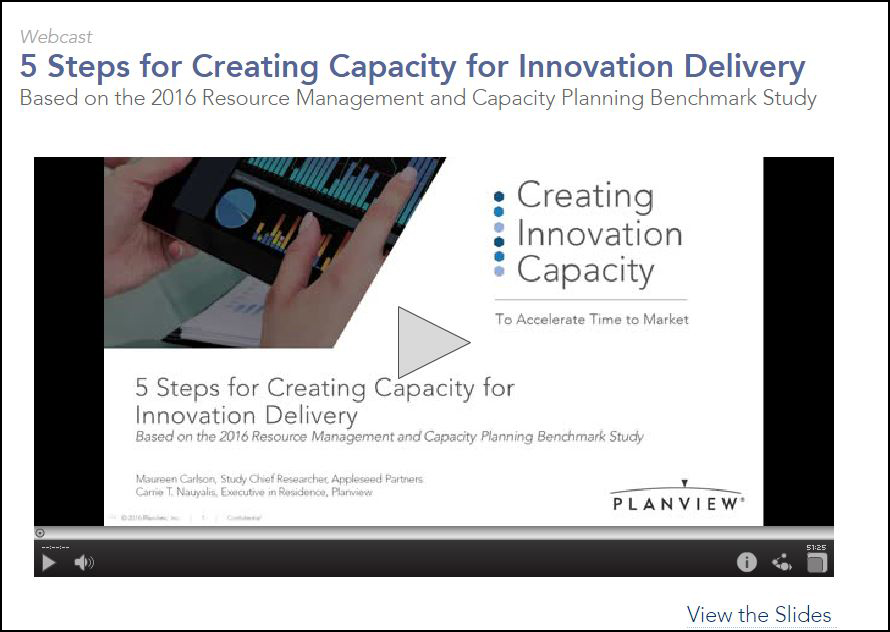
We’ve all been there: the meeting, the hallway chat, the email that renders weeks or months of hard work moot. This is how things are, sometimes. Strategies shift. Priorities change. It’s frustrating, but it’s not like this is the only thing taking up a developer’s time.
Consider the status reporting, emails, meetings, documentation, and so much more to which the developer must attend, often before doing any real work.
There isn’t actually a sinister plot to waylay you from getting work done, it just seems like it. The statistic that most workers are only productive 60% of the time rings true,1 despite our best efforts. Since we’re not going to escape shifting priorities, meetings, emails, or documentation, how can we wring the most out of that sliver of productive time?
In a word (well, a few): better demand and resource management.
How our time is wasted: Poor demand and resource management
If your organization lacks insight into demand, it’s likely that up to 50% of the projects you are working on right now weren’t planned for2 – which are the kind most likely to get killed due to strategy shifts.
Poor resource visibility brings its own problems. Organizations that lack capacity planning have3:
- 77% – Overcommitted resources
- 62% – Inability to prioritize resources
- 56% – Inaccurate resource estimates
Harvard Business Review notes a compounding issue, that development managers keep utilization above 98%4 to speed time to market. But that doesn’t bear out:
- People are over-allocated, as committed and in-progress work is largely invisible
- Development work is unpredictable, and people need time to work new processes
- Queues grow as resources backlog, creating priority shifts before work can even begin
Put lack of insight into both demand and resources together – and in most product organizations, if you have one of these problems, you have both – and you have the perfect recipe for wasting developers’ time.
Cracking the visibility code
Everyone involved knows there’s a problem. But like your smelly dog or that cousin who talks politics at family dinners, it’s a problem you just… live with. Work around.
Usually there are spreadsheets or desktop products involved; possibly an arcane sticky-note “solution” that only a Level 6 Zen Master could discern; maybe it’s a little of both. Whatever the approach, your time is still getting wasted.
Cracking the visibility code means getting real. It means acknowledging that “we have a problem knowing what we need to work on and who can do the work, when.” It means investing in the right solution to get that knowledge.
The difference demand and resource visibility makes
Product Innovation Lifecycle solutions are designed to stop wasting your time. These solutions give your organization visibility into demand and resources, real time, so product and project managers can see what’s coming and assign the right people to the right work.
Organizations that improve visibility5:
- Increase project prioritization ability by 25%
- Are 25% less likely to overcommit their people
- Are 21% less likely to constantly change projects and assignments
This means that you’re that much more likely to be working on planned projects, so you’re much less likely to find out halfway through that your project’s been killed.
Product Innovation Lifecycle solutions also provide analytics and reporting, so often a few clicks can accomplish what used to require several hours or more, communicating status directly to managers without taking you away from your work.
Next steps
Nobody likes wasting time. We all want to do our best work and make an impact, developing great products that delight customers. It’s aggravating when work you’re proud of is for nothing. It’s worse when you’ve seen it happen time and again.
If you’d like to see the real value of demand and resource visibility, check out the webcast 5 Steps for Creating Capacity for Innovation Delivery, which shows you how your organization can make these benefits real.
Tell me about it!
Have you had a frustrating time-waster project? Did you call it ahead of time? Or maybe you were able to rescue a project you were particularly certain of? Tell me about it in the comments!
- Time Management Statistics. (2016). Keyorganization.com. Retrieved 25 October 2016, from http://www.keyorganization.com/time-management-statistics.php
- Planview (2016). Go.planview.com. Retrieved 25 October 2016, from https://go.planview.com/rs/587-QLI-337/images/2016-RMCP-Creating-Innovation-Capacity-Infographic.pdf
- Capacity Planning for Product Leaders | Planview. (2016). Planview. Retrieved 25 October 2016, from https://www.planview.com/resource-management-capacity-planning/product/
- Six Myths of Product Development. (2012). Harvard Business Review. Retrieved 25 October 2016, from https://hbr.org/2012/05/six-myths-of-product-development
- Capacity Planning for Product Leaders | Planview. (2016). Planview. Retrieved 25 October 2016, from https://www.planview.com/resource-management-capacity-planning/product





